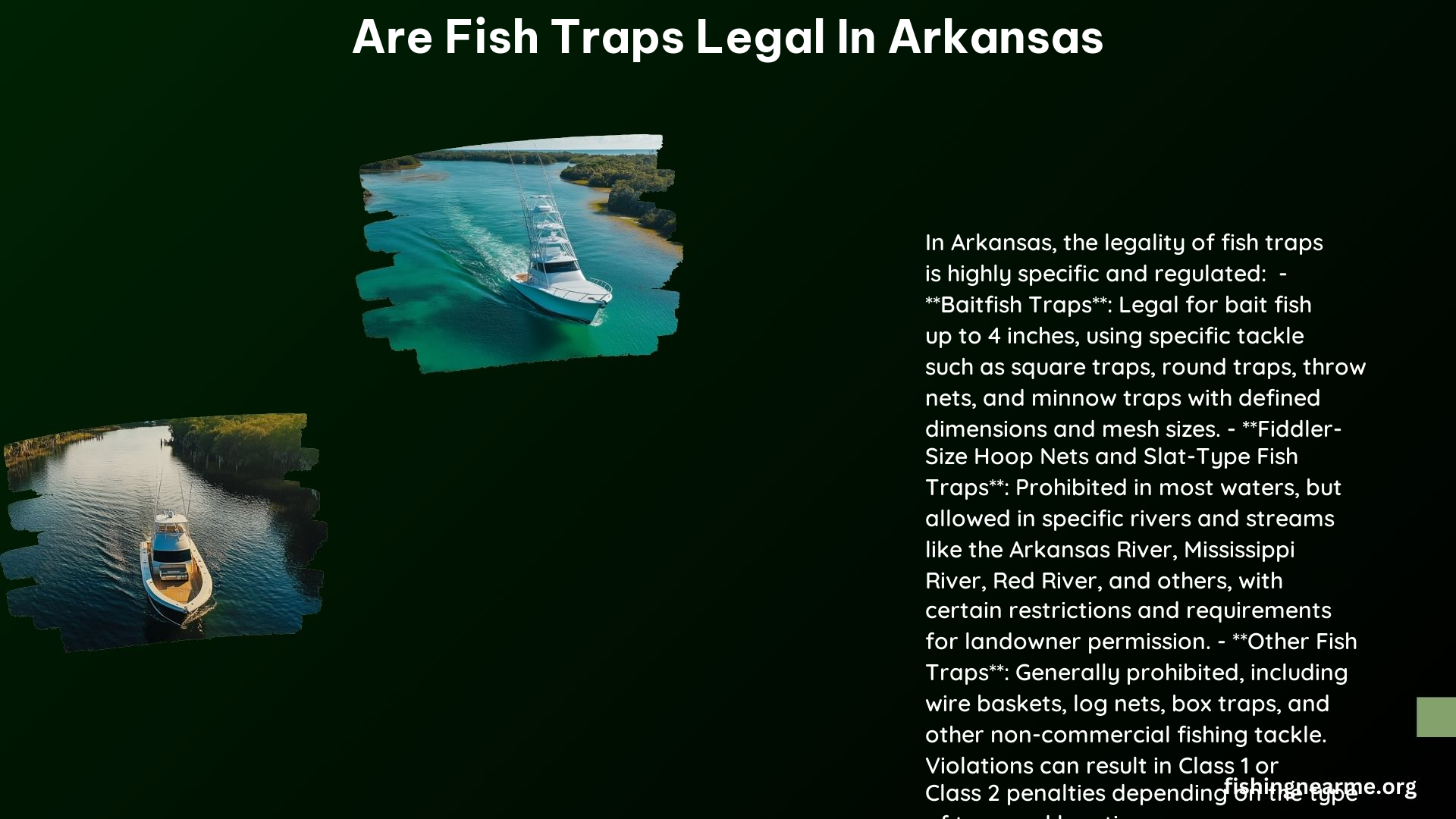Fish traps in Arkansas are subject to specific regulations, with legality varying based on location, type, and intended use. The Arkansas Game and Fish Commission (AGFC) permits certain fish traps in designated waters under strict conditions. This article explores the legality, restrictions, and regulations surrounding fish traps in Arkansas, providing essential information for anglers and commercial fishers.
What Are the Legal Aspects of Fish Traps in Arkansas?
In Arkansas, the use of fish traps is regulated by the AGFC. The legality of fish traps depends on several factors:
- Type of Trap: Fiddler-size hoop nets and slat-type fish traps are legal in specific waters.
- Location: Only certain rivers and lakes allow the use of these traps.
- Permissions: Landowner permission may be required in some areas.
- Intended Use: Regulations differ for commercial and recreational fishing.
Permitted Waters for Fish Traps
Fish traps are allowed in the following waters:
- Arkansas River
- L’Anguille River
- Little River
- Mississippi River
- Red River
- St. Francis River
- St. Francis Floodway Diversion Ditch
- Bay Ditch
- Old Town Lake
- White River
- Cypress Bayou
- Sulphur River
- Boeuf River
However, specific sections of these waters may have additional restrictions or prohibitions.
What Are the Specific Regulations for Fish Traps?
The AGFC has established detailed regulations for fish traps:
- Size Limits:
- Seines: Not exceeding 50 feet long
- Square traps: Not exceeding 6 feet by 6 feet by 3 feet
-
Round traps: Not exceeding 3 feet in diameter and 6 feet long
-
Seasonal Restrictions:
-
Slat traps may be used year-round in certain areas, such as Little River upstream of Patterson Shoals boat ramp to the Oklahoma state line.
-
Species Restrictions:
- Generally, regulations focus on gear and locations rather than specific species.
-
Only baitfish may be retained when using specified tackle.
-
Regional Variations:
- Some areas allow only slat traps.
- Fiddler-size hoop nets are prohibited in certain sections, like parts of the Arkansas River.
What Are the Penalties for Violating Fish Trap Regulations?
Violations of fish trap regulations can result in significant penalties:
- Class 2 Offense: Using fiddler-size hoop nets in restricted areas.
- Class 1 Offense: More severe violations, such as using prohibited gear.
The severity of the penalty depends on the specific regulation violated and can include fines and potential loss of fishing privileges.
What Are the Legal Fishing Methods in Arkansas?
Arkansas allows several legal fishing methods:
- Seines
- Square traps
- Round traps
- Throw nets
- Casting nets
- Shad trawl nets
- Plastic or wire mesh minnow traps
- Hand-operated dip nets
- Lifts (for personal use while sport fishing)
What Fishing Methods Are Prohibited in Arkansas?
The following fishing methods are prohibited:
- Wire baskets
- Wire traps
- Log nets
- Box traps
- Any fish-trapping devices not considered legal commercial fishing tackle
How Do Fish Trap Regulations Contribute to Conservation Efforts?
Fish trap regulations in Arkansas play a crucial role in conservation:
- Habitat Protection: Restrictions on trap use in certain waters help protect sensitive ecosystems.
- Species Management: Regulations ensure sustainable fishing practices for various species.
- Population Sustainability: By limiting trap use and size, regulations help maintain healthy fish populations.
- Ecosystem Balance: Restrictions on bycatch help protect non-target species.
What Should Anglers Know About Fish Trap Use in Arkansas?
Key points for anglers:
- Check Local Regulations: Always verify current regulations for specific waters.
- Obtain Necessary Permissions: Secure landowner permission where required.
- Use Appropriate Gear: Ensure traps meet size and type requirements.
- Practice Responsible Fishing: Release non-target species immediately.
- Stay Informed: Keep up-to-date with any changes in AGFC regulations.
By adhering to these regulations, anglers can enjoy fishing while contributing to the conservation of Arkansas’s aquatic resources.

